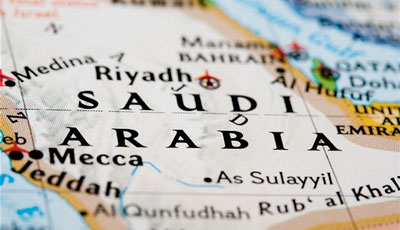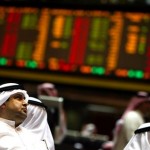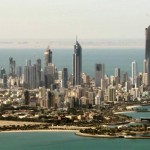Saudi Arabia: Could This Spark a Stock Market Crash in 2016?

Saudi Arabia’s Budget Woes Could Trigger Economic Collapse in 2016
The collapse of oil prices to below $37.00 per barrel, compared to $56.00 last January, has sunk Saudi Arabia’s accounts and hurt its budget expectations.
According to the 2015 budget that Saudi Arabia’s King Salman (Salman bin Abdulaziz Al Saud) unveiled on December 28, the Gulf state that is the symbol of oil producing and exporting countries will face a 367-billion-riyal deficit this year, which is about USD$87.0 billion. (Source: “Saudis unveil radical austerity programme,” The Financial Times, December 28, 2015.)
That the decline in oil prices represents a nasty blow to the economy of Saudi Arabia is a given. However, oil is an asset like no other; it is tied to the global financial system and its price drop is affecting the very fate of the kingdom. Because of Saudi Arabia’s key role in the oil system, it has a global impact, potentially causing a major stock market crash in 2016.
Saudi Arabia has never seen a budget deficit of such proportion; it is a historical record and equivalent to 15% of its gross domestic product (GDP). Such a deep hole in the kingdom’s accounts is the result of the drop in revenue from energy commodities exports. (Source: “Saudi Arabia reveals cuts plan to shrink $98bn budget deficit,” The Guardian, December 28, 2015.)
Saudi Arabia exports seven million barrels of oil a day and sales account for 90% of fiscal revenues, or 40% of GDP. At current prices, revenues are but a shadow of their past selves.
One of the global factors linking Saudi Arabia’s budget deficit and related austerity to global economic collapse is that oil prices and commodities are making the riyal-to-U.S. dollar peg increasingly unsustainable, while fueling the risk of a stock market crash in 2016.
This weakness is causing a flight of capital and the depletion of foreign exchange reserves put in place to protect the value of the currency. The mere reduction in revenue due to depressed crude oil prices is then amplified and exacerbated.
Saudi Arabia’s austerity and its global domino effects in 2016: stock market crash. The collapse in oil prices has lowered the confidence of investors worldwide, triggering a domino effect of stock market crashes. One example: the collapse of the Shanghai stock exchange, which sent up some $5.0 billion in smoke in 2015 and triggered losses elsewhere, especially in large emerging markets like the BRICS countries (Brazil, Russia, India, China, and South Africa). The effects will be echoed in 2016 with the potential for a global market crash.
Saudi Arabia and other Middle Eastern countries, such as Egypt, will be particularly vulnerable to any loss in confidence. This has profound geopolitical implications: countries that owe their survival to a generous system of social assistance and an equally pervasive repression could not survive the aftermath and Saudi Arabia has increased its very risk of survival because of its oil price policy. Trouble in Saudi Arabia would have global geopolitical and economic repercussions in 2016—and certainly a major market crash.
Now Saudi Arabia is directly and indirectly involved in four wars (Yemen, Syria, Iraq, and Libya) and is trying to make sure that the government of President Abdel Fattah el-Sisi in Egypt does not implode. In Syria, the Saudis are trying to overthrow President Assad and the costs have increased dramatically. The war shows no signs of ending; in fact, it shows signs that it’s becoming more complicated with unpredictable costs via both economic and political risks.
The Saudi government has been forced to take measures that will amount to nothing short of an unprecedented austerity program in 2016. As announced in a press conference in Riyadh, the Saudi Ministry of Finance will try to save $10.0 billion through budget cuts, mostly at the expense of the population.
Saudi austerity will begin with the cutting of public subsidies. Among other things, Saudis will be shocked to find that gasoline prices will rise by $0.16 to $0.24 per liter. Wealthier Saudis will pay more for electricity and water and smokers will face the inevitable tax increases on tobacco consumption.
Saudi Arabia may even privatize certain economic sectors, which could include the introduction of a bond market, which will issue securities. All of this is new and potentially dangerous for a country accustomed to a budget surplus. It is also a new situation for the world and global markets will react in a bearish fashion, prompting an overall crash in 2016.
As reported by al-Arabiya TV, a few days ago, King Salman, who ascended the throne last January, announced that Saudi Arabia is ready to implement programs to diversify sources of income and reduce dependence on oil as a main source of income. (Source: “Saudi Arabia unveils 2016 Budget,” Al-Arabiya, December 28, 2015.)
Consequently, in 2016, the Saudi monarch would like to narrow the gap between income and expenditures at 326 billion riyals. The budget currently expects expenditures worth 840 billion riyals (USD$224 billion), which is already 14% less than 2015. (Source: Ibid.)
However, revenues are 513 billion riyals and the budget for military spending alone amounts to 213 billion riyals, suggesting Saudi security and fighting terrorism are King Salman’s priorities, even if the sovereign has paid lip service to “development.”
Meanwhile, at the most recent Organization of the Petroleum Exporting Countries (OPEC) meeting, held on December 4, the organization that brings together the world’s main oil exporting countries failed to reach an agreement on cutting production levels, postponing the decision until June 2, 2016. The markets read this move as OPEC, and Saudi Arabia in particular, choosing to forego production quotas.
How Long Can Saudi Arabia Keep Up Appearances?
Given the evident budget constraints, how long can Saudi Arabia keep up the pretense that everything is proceeding according to an apparent plan, when the current oil production regime is driving crude prices to near-collapse in 2016. Saudi Arabia is paying its obstinacy to take out American shale operations, something that may yet succeed, given the fact that the current oil price is well below the break-even mark. The Saudi policy also targets, and given the differences over Syria, the crippling of Russia, which, it turns out, exported more oil than the kingdom in 2015.
As for Riyadh and King Salman’s ambitions, the situation is probably far worse than the budget deficit suggests. Saudi Arabia’s reliance on crude oil is absolute and the standard of living it provides for tens of thousands of Saudis makes it essential for internal stability as well. Indeed, it would not be a stretch to suggest the Saudi royal family’s hold on power depends on its ability to convert oil into a decent standard of living for the kingdom’s subjects.
As Saudi Arabia has been burning through reserves at an unprecedented pace over the past year, mostly to support military spending and social welfare to keep social unrest in check, it is unclear what King Salman has in mind when he urges diversification. Even SABIC, the huge Saudi chemicals consortium, relies on oil production. Indeed, social spending is where the budget deficit exposes its biggest risk for the kingdom.
The reality is that oil production revenues have masked the problem of Saudi indigenous unemployment and underemployment, both of which are at unsustainable levels because the private sector labor market is based almost exclusively on foreign labor (Asian) and menial jobs. The public sector, meanwhile, is filled with Saudi citizens interested mainly in pocketing generous state salaries while their jobs are seen as a right, an essential component of the bargain between the House of Saud and its subjects.
Now the kingdom is coming under increasing pressure to cut, as much as King Salman will insist on reducing costs. It will be next to impossible to downsize the welfare state, much less the military budget. During the peak of the “Arab Spring” in 2011, Saudi Arabia raised its welfare budget in order to discourage the population from revolting. How will King Salman confront the current crisis?
Read also: Saudi Arabia reveals cuts plan to shrink $98bn budget deficit
Source: Profit Confidential – Saudi Arabia: Could This Spark a Stock Market Crash in 2016?




























